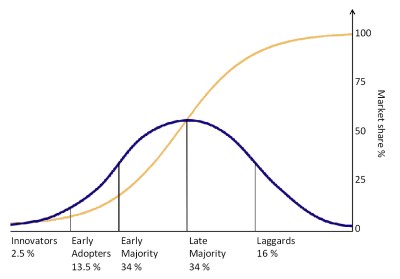Late Adopters: When it Pays to be Old School

These days if you’re not using YouTube, Pinterest whilst simultaneously updating your SaaS career site, keeping track of your social ROI and don’t forget to check and tweak your analytics. What’s that you say? No time to get on the phone or actually recruit you say?
It’s a common issue among modern day recruiters. And the answer can be as simple as this: Become a late adopter. While it’s hard to stay on the sidelines while everyone else experiments with a new tool, it can be time-saving, efficient and a great way to test out new technologies with little effect on the organization. Another benefit? Making sure that new technologies will work for you before spending valuable time and energy testing them.

1) It’s fast. With blogging, information and educational communities and visual and audio learning tools like Slideshare, YouTube and iTunes, it doesn’t take very long to hear the pros and cons of a certain tool or process. Simply keep an eye on what’s trending and google it when you have the time. Want to know how YouTube is working for an events company? How about Pinterest for a grocer? Yeah, this information is already on the internet.
2) It’s free. Informational communities like this one allow you to debate the merits of free or paid tools with professionals in your own field and sometimes even in your own vertical. With the top-notch search skills of many recruiters, sourcers and HR pros, it takes just a few clicks, a quick Boolean search and some scanning, without a dollar spent, to find out if tools are right for your company.
3) It’s how people adapt to technology. While Google+, online education, Foursquare and more may not have taken off with the HR set right off the bat, enterprising recruiters started “hacking” into these social networks, platforms and processes and made them useful for their colleagues. At the same time, consumers and candidates themselves were hearing more about the technologies and starting to move toward the platforms themselves and creating a more robust marketplace.
4) Assess. Assess. Assess. Recruiters, HR Professionals and Hiring Managers are used to using assessments and adopting technologies after some of the data has come in about real world usefulness is no different. While this sort of “wait and see” attitude won’t work without experimental professionals (fortunately our profession is lucky enough to have quite a few) and may not sit well with vendors hungry to snag high profile “practitioners”, it does make the most sense for time-strapped workers.
5) It’s a numbers game. TechCrunch recently wrote about the rise of interest based social networks and while many of these new networks are consumer to consumer in nature, eventually the time will come when B2B affects the social marketplace more than it does today. When that happens, our early experimenters or innovators will give us the scoop on how to navigate these networks. No one can engage on every network simultaneously with any effectiveness. Focus on the platforms that make sense for your team.

